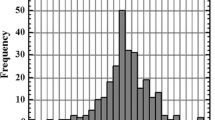Abstract
A study of the electronic structure of the three sulphides, SrS, BaS and PuS has been carried out in this work, using the powder X-ray intensity data from JCPDS powder diffraction data base. The statistical approach, MEM (maximum entropy method) is used for the analysis of the data for the electron density distribution in these materials and an attempt has been made to understand the bonding between the metal atom and the sulphur atom. The mid-bond electron density is found to be maximum for PuS among these three sulphides, being 0.584 e/Å3 at 2.397 Å. SrS is found to have the lowest electron density at the mid-bond (0.003 e/Å3) at 2.118 Å from the origin leaving it more ionic than the other two sulphides studied in this work. The two-dimensional electron density maps on (100) and (110) planes and the one-dimensional profiles along the bonding direction [111] are used for these analyses. The overall and individual Debye-Waller factors of atoms in these systems have also been studied and analyzed. The refinements of the observed X-ray data were carried out using standard softwares and also a routine written by the author
Similar content being viewed by others
References
N K Hansen and P Coppens,Acta Crystallogr. A34, 909 (1978)
R D Poulsen, A Bentien, T Graber and B B Iversen,Acta Crystallogr. A60, 382 (2004)
D Marabello, R Bianchi, G Gervasio and F Cargnoni,Acta Crystallogr. A60, 494 (2004)
R Saravanan, Y Ono, M Isshiki, K Ohno and T Kajitani,J. Phys. Chem. Solids 64, 51 (2003)
S Israel, R Saravanan and R K Rajaram,Physica B349, 390 (2004)
S Israel, R Saravanan, N Srinivasan and R K Rajaram,J. Phys. Chem. Solids 64, 879 (2003)
S Israel, R Saravanan, N Srinivasan and R K Rajaram,J. Phys. Chem. Solids 64, 43 (2003)
R Saravanan, S Israel, S Swaminathan, R Kalidoss and M Muruganantham,Cryst. Res. Technol. 37, 1310 (2002)
R Saravanan, S K Mohanlal and K S Chandrasekaran,Acta Crystallogr. A48, 4 (1992)
K Balamurugan, R Saravanan, K Asharamani, P Manimaran, S Mariyappan, N Srinivasan, Y Ono, M Isshiki and T Kajitani,J. Crystal Growth 250, 382 (2003)
T Kajitani, R Saravanan, Y Ono, K Ohno and M Isshiki,J. Crystal Growth 229, 130 (2001)
M Sakata and M Sato,Acta Crystallogr. A46, 263 (1990)
T Saka and N Kato,Acta Crystallogr. A42, 469 (1986)
S Yamamura, M Takata, M Sakata and Y Suguwara,J. Phys. Soc. Jpn. 67, 4124 (1998)
T Ikeda, M Takata, M Sakata, J Waliszewski, L Dobrzynski, S Porowski and J Jun,J. Phys. Soc. Jpn. 67, 4104 (1998)
K Yamamoto, Y Takahashi, K Ohshima, F P Okamura and K Yukino,Acta Crystal-logr. A52, 606 (1996)
FULLPROF,Rietveld, profile matching and integrated intensities refinement of X-ray and/or neutron data (powder and/or single-crystal), Version 3.5d, Oct98-LLB-JRC, JuanRodriguez-Carvajal, Laboratoire Leon Brillouin (CEA-CNRS)-Originally developed from the program byD B Wiles and R A Young,J. Appl. Cryst. 14, 149 (1981), (DBW3.2S, Versions 8711 and 8804)
D M Collins,Nature (London) 298, 49 (1982)
E Teatum, K Gschneidner and J Waber,Compilation of calculated data useful in predicting metallurgical behaviour of the elements in binary alloy systems, LA-2345 (Los Alamos Scientific Laboratory, 1960)
Author information
Authors and Affiliations
Rights and permissions
About this article
Cite this article
Saravanan, R. Application of maximum entropy method for the study of electron density distribution in SrS, BaS and PuS using powder X-ray data. Pramana - J Phys 66, 1057–1065 (2006). https://doi.org/10.1007/BF02708459
Received:
Revised:
Accepted:
Issue Date:
DOI: https://doi.org/10.1007/BF02708459




